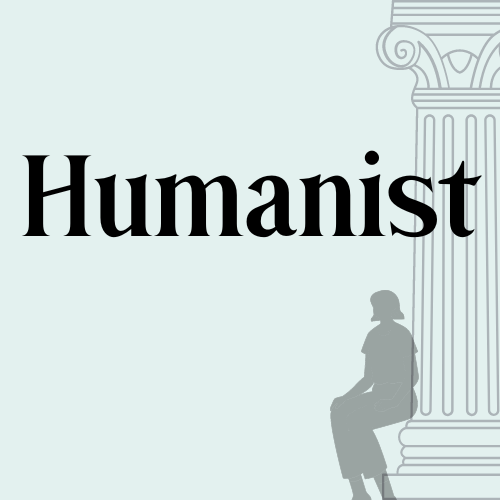What does it mean to be "student-centered"? Or, how is Latin like horseback riding?
When I first heard the term "student-centered teaching," I recognized it as an apt description of what I had been doing instinctively. In general, it means shifting your focus from the content you're teaching to what your students are learning.

My first teaching experience wasn't in Classics. Actually, it wasn't even in a classroom. I hadn't started studying Latin yet, although I was very into Greek mythology. I didn't look very professional, and was covered in dirt at the time. I was a junior counselor-in-training at my beloved sleepaway camp, and I was teaching my favorite subject: horseback riding.
When teaching horseback riding at a summer camp, your first priority is not to end up on the phone with a kid's parents, explaining how they ended up at the hospital. Your second priority is to try to make sure everyone is having a good time, or at least that no one is excessively miserable, including the horses. Trotting in circles for an hour is a great way to develop skills and muscle memory and fitness, but it is boring for everyone involved, so you do have to intersperse some fun and creative activities.
The point of teaching horseback riding is not what the teacher is doing, but what the students are doing with the teacher's coaching and guidance. Lesson planning is of limited use in this situation, as I learned the hard way. You know how they say "a battle plan never survives first contact with the enemy"? Well, a lesson plan in this context never survived first contact with my pupils and the horses. If a rider wasn't ready to do what I had planned, I had to come up with something else. Maybe they were having a bad day, or maybe they hadn't built up to that skill successfully and we had to go back to basics. With horses, you can't let them develop bad habits by letting them get away with disobedience or end on a bad note: you have to end with some kind of successfully executed intention by the rider. Which means that as the instructor, you have to think of something that's doable, and then coach and support the rider, even one whose confidence is shaken by a fall, in doing it.
This was surprisingly good training for teaching in higher ed, although the expectations for personal hygiene were pretty different. What it taught me was that my teaching had to be adaptive, conditioned not by the subject I was teaching but by the people who were learning it, what support they needed and what pace worked for them. It's particularly pertinent to Latin, with its slow progression of skill-building, practice, and drills. Just because a student picks up noun declensions quickly doesn't mean they'll master purpose clauses at the same rate. Learning the third declension may reveal that the student never quite mastered the "simpler" declensions, so there's inevitably some backtracking (or "interleaving," to use the proper education term). Holding a riding position while your horse is standing still is one thing, but it's another thing while the horse is moving or jumping. Likewise, knowing all the vocabulary in the Aeneid isn't a learning outcome any of us would designate; you want students to be able to apply that knowledge to read the poem and find meaning in it. And managing boredom and staleness in a Latin classroom through the use of creative, varied activities can also increase learning as well as motivation.
When I first heard the term "student-centered teaching," I recognized it as an apt description of what I had been doing instinctively. Actually, it's a very capacious and general term that can encompass a whole lot of pedagogical approaches, not all of them helpful.
The Learning Paradigm
In a 1995 article, Robert Barr and John Tagg of Palomar College in California wrote about a paradigm shift under way in the world of education:
In its briefest form, the paradigm that has governed our colleges is this: A college is an institution that exists to provide instruction. Subtly but profoundly we are shifting to a new paradigm: A college is an institution that exists to produce learning. This shift changes everything. It is both needed and wanted. We call the traditional, dominant paradigm the "Instruction Paradigm." Under it, colleges have created complex structures to provide for the activity of teaching conceived primarily as delivering 50-minute lectures - the mission of a college is to deliver instruction. Now, however, we are beginning to recognize that our dominant paradigm mistakes a means for an end. It takes the means or method - called "instruction" or "teaching" - and makes it the college' s end or purpose. To say that the purpose of colleges is to provide instruction is like saying that General Motors' business is to operate assembly lines or that the purpose of medical care is to fill hospital beds. We now see that our mission is not instruction but rather that of producing learning with every student by whatever means work best. "From Teaching to Learning - A New Paradigm For Undergraduate Education."
The tension between these two paradigms had existed in higher ed for almost 200 years, actually. Sabine Hoidn, editor of the Routledge International Handbook for Student-Centered Learning and Teaching in Higher Education, explains that the earliest North American colleges relied on two teaching methods: recitation and disputation. Students recited what they had learned, and argued about interpretations, meaning, and perspectives. But as North American universities began to adopt the German research university model, and particularly as class sizes ballooned after World War II, the mode of instruction shifted to the expert researcher lecturing to a room of hundreds.
Lecturing has many great uses and advantages, but not as the sole course activity. Harvard's president in 1869, Charles Eliot, compared it to pouring water through a sieve. Educators like John Dewey and David Kolb pointed to the educative value of experiential learning and practice in applying knowledge, calling on educators to incorporate active learning components into their teaching. Early Russian psychologist Lev Vygotsky emphasized that knowledge is not merely static, to be transferred from teacher to student, but is socially constructed in the context of a learner's experience and interactions with other people, so that learning could never be as effective when done in silence. More modern psychologists confirmed this: Trier scholars Michael Schneider and Franzis Preckel found in a meta-analysis that social interaction in discussions, question-asking, small-group learning, and peer assessment were all strongly correlated with student achievement. Although instructors may feel that they are "covering" less material than when they lecture continuously, learners leave the class having learned more content, not less.
Michael Prosser and Keith Trigwell, two Australian scholars of education, have been studying the efficacy of both paradigms for several decades. Using data from thousands of students (not just self-reported satisfaction but also data on student achievement), they have shown that lecturing usually produces surface knowledge, a loose assemblage of facts that students have trouble remembering, synthesizing, or applying outside the context of the course. More active modes of instruction, by contrast, are more likely to produce deep learning – and they also produce more positive emotions in both instructor and student, which makes both more motivated.
Another critique of the instruction paradigm came from Paulo Freire and other critical thinkers. Freire calls the instruction paradigm the "banking" model of education, where knowledge is deposited into passive, empty minds. This is not only an ineffective way of educating people, but also an oppressive one, a mode of dominating and controlling learners. Freire envisioned a revolutionary education that liberated people, restored their humanity to them as thinking subjects, and supported them by providing space for them to engage in dialogue and look critically at the oppressive systems that undergirded their everyday reality. For him, education isn't about changing students; it's about empowering students to change reality.
The more students work at storing the deposits entrusted to them, the less they develop the critical consciousness which would result from their intervention in the world as transformers of that work. The more completely they accept the passive role imposed on them, the more they tend simply to adapt to the world as it is and to the fragmented view of reality stored in them. (The Pedagogy of the Oppressed)
Maryellen Weimer, an education professor emerita at Penn State Berks, wrote about her personal journey from the instruction paradigm to the learner paradigm in Learner-Centered Teaching. In reading and reflecting on Stephen Brookfield's Becoming a Critically Reflective Teacher, Weimer came to see her teaching as overly controlling. It's easy to plan a lesson when you are the one doing all the talking, because you control the time. But is anyone learning anything?
What happens in the typical college classrooms? Who’s delivering the content? Who’s leading the discussions? Who’s previewing and reviewing the material? Who offers the examples? Who asks and answers most of the questions? Who calls on the students? Who solves the problems, provides the graphs, and constructs the matrices? In most classrooms, it’s the teacher. When it comes to who’s working the hardest most days, teachers win hands down. Students are there, but too often education is being done unto them. (Learner-Centered Teaching)
This is the way one of my high school chemistry teachers ran our class: he'd lecture and do a problem on the board, then send us off into groups to do more practice problems. If you didn't understand what he'd demonstrated, you were up a creek. I don't remember more particulars of how the class ran, but I do remember that some of my friends not only couldn't learn chemistry this way, but got frustrated and angry and disengaged from class entirely – they didn't learn chemistry, and they learned to hate chemistry. For about 50% of the students in his class, this teacher might as well have been teaching in a different language – or not teaching at all.
This paradigm is built on a scarcity mindset: success is scarce, and based on the genius that the student walks in with, needing only the spark of instruction to catch fire. A lot of STEM intro-level courses in higher ed are structured around this mindset too: if 90% of the class fails, it's a success, because you've culled out the students without aptitude for the subject.
What research in the education field shows is that this scarcity is not real. Intelligence and academic success aren't qualities that students either have or don't. Students walk in the door with differing levels of knowledge and familiarity with the subject, and that has a huge effect on how quickly they're able to learn new information and skills, but so does the kind of instruction and practice they get in the classroom, as Trigwell and Prosser show. And since increased domain knowledge is often a reflection of a more privileged upbringing, if we want to be truly inclusive in our teaching, we can't just let prior knowledge be the determinative factor in who succeeds and who fails in our classrooms.
As Weimer initiated a new praxis of learner-centered teaching, she writes, she began to think about course content in a new way. She wasn't trying to plant or deposit course content into students' brains anymore; instead, she was using course content, not as the end, but as the means by which students would develop skills, knowledge, and critical awareness. Assessments became an opportunity for students to deepen their knowledge through review and retrieval, not a punitive ordeal.
In some ways, universities and colleges have been heeding Barr and Tagg's call to adopt a learner-centered paradigm, but not very effectively. Barr and Tagg point out that if "50 minutes of a professor talking" is no longer the key output of a class, we have to look at different metrics and outcomes: student learning as demonstrated on exams, including entrance and exit exams from college as well as certificates or credit given for knowledge and skills as they are mastered. But I've written before about misguided assessment based on "learning objectives," and higher ed's current fixations on "competency-based education" and "micro-credentials" are also reductive, measuring only what is quantifiable and concrete and thus devaluing important skills like higher-order critical thinking, self-awareness, and understanding diverse perspectives. Gert Biesta's Rediscovery of Teaching and other works present helpful correctives to these wrong-headed attempts at learner-centered teaching.
Ultimately, no one can mandate learner-centered teaching or impose a universally applicable framework for it: it's up to individual professors to shift paradigms and invest time in starting to experiment with new approaches. But we could be doing a lot more, especially for graduate students, to support that shift.





